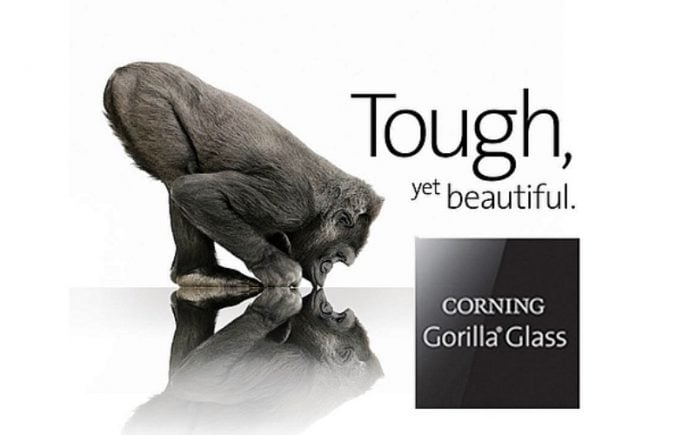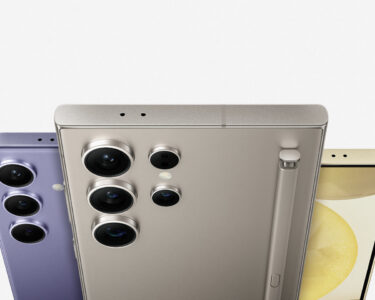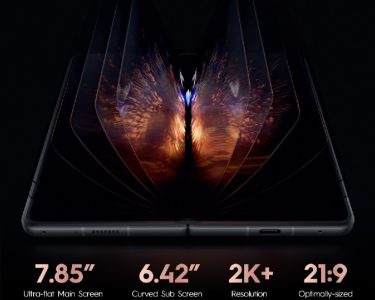Drop your mobile as much times as you like to. How many times do one can drop a mobile on ground or floor, well according to Corning that number stands at 7 times; after which no one ensure its safety. While Gorilla Glass 5 was designed to withstand 7 drops on average that number doesn’t seem to be satisfactory to Corning. The recently announced Gorilla Glass 6 update from Corning can withstand an average of 15 drops.Gorilla Glass is a name that hasover the years made a reputationof making smartphone glass. This is understandable given that there are billions of devices (including high-end phones) currently circulating that use Gorilla Glass in some form or the other. John Bayne the Vice President and General Manager at Corning remarked that glass conveys a certain quality and precision, which is why it’s so well adopted.
Plastic seems like a viable and shatterproof alternative to glass screens doesn’t feel as nice as glass andis nowhere near as durable. Plastic will lose its quality in a fraction of the time that traditional glass will and is also subject to distortion at higher temperatures.Given that glass is so integral to a smartphone’s screen, one can appreciate how smartphone design is tied to the quality of the glass. The very common 2.5D glass and 3D formed glass that we’re seeing on devices in the budget and mid-range segments of the market would not exist if it was not for the development of stronger and more durable glass. And it is safe to say that Corningplays a significant part in this process.
The glass on phones is thin and getting thinner to make the phones look sleeker to the consumers. At the same time it has to be engineered to be tougher as well. Over years of testing the Corning engineers have pinned the reasons for glass failure to two aspects. The first is a flaw in the glass itself, which will expand by time, causing further damage, and contact with an external, sharp surface, these two factors account to four-fifth of screen damage and glass failure cases.Gorilla Glass 6 has been designed from scratch to be stronger, durable and reliable than its predecessor Gorilla Glass 5.Corning runs its Gorilla Glass formulations through a wide range of tests. The most commonly used surface for these tests (be they drop tests or abrasion tests)is 180 grit sandpaper.Sandpaper is an excellentalternative to surfaces like asphalt and concrete and is a more consistent test platform provided that the other surfaces will wear out.
Must Read: Searching the word ‘idiot’ shows the image results of Donald Trump on Google
The tests are conducted with shapes of glass from various types. This ensures that a lot of possible factors are taken into account. Gorilla Glass 6 was, in fact tested on 120 grit sand paper to ensure its durability.Apparently the ompeting anonymous glass formulations tend to fail on the first drop. Corning claims that 70 % ofGorilla Glass 6 samples can survive upto 20 drops without failure.Other tests include a 45-minute tumble in a cylinder filled with keys and other odds one can expect in pockets. The difference between Gorilla Glass 5 and 6 comes down to long-term survivability, as they claim Gorilla Glass 6 can lost two times longer.When asked if the glass weakens with each successive drop, Corning was quick to say that this is not the case. They state that every time phones drop there is a probability of failure. Gorilla Glass 6 revolves around reducing that possibility.An interesting point that was raised at the event was that of the cost of implementing Gorilla Glass in cheap phones that are everywhere in South Asia.Corning’s take was that the cost of cover glass is a small fraction of the overall cost of phones. The problem using cheaper glass is that it’ll break easily.For someone buying a phone in South Asia that purchase is a significant one it could be after saving month’s worth of salaries in cases and to have that purchase look useless through small accidents will be agonizing. That tinge in price differences is due to superior screens.
While the timeline of new glass introduction was unknown to market observers that we’ll see phones with Gorilla Glass 6 by the end of 2018. Phone makers already have access to the technology and have been involved to some degree in the design process. Wearables like smart-watches create a different set of challenges to engineers. Unlike smartphone glass, it’s more important that the devices be scratch-resistant than drop resistant. Your watch for example isn’t as likely to fall off your hands as it is to get scratched when its face brushes a corner or a wall.To end that Corning has announced Gorilla Glass DX and DX+.
These new formulations are designed with better anti-reflective properties, optical clarity and scratch resistance. The formulations apparently approach sapphire glass for scratch resistance and traditional Gorilla Glass for durability. Sapphire glass is very hard and the gold standard for scratch-resistant glass. Found on some of the most expensive watches and on the camera lenses of high-end phones, the difference between them is that the DX is as scratch-resistant as Gorilla Glass. DX+ is stronger.
One of the most interesting demos we saw at the event involved something called Vibrant Gorilla Glass. This is glass that can be colored and textured using Corning’s inkjet printing technique. Glass was made to look and feel like different materials including snake skin, leather, wood, and various materials.Corning does this by painting the underside of the glass and then embossing a matching texture on the other side.




